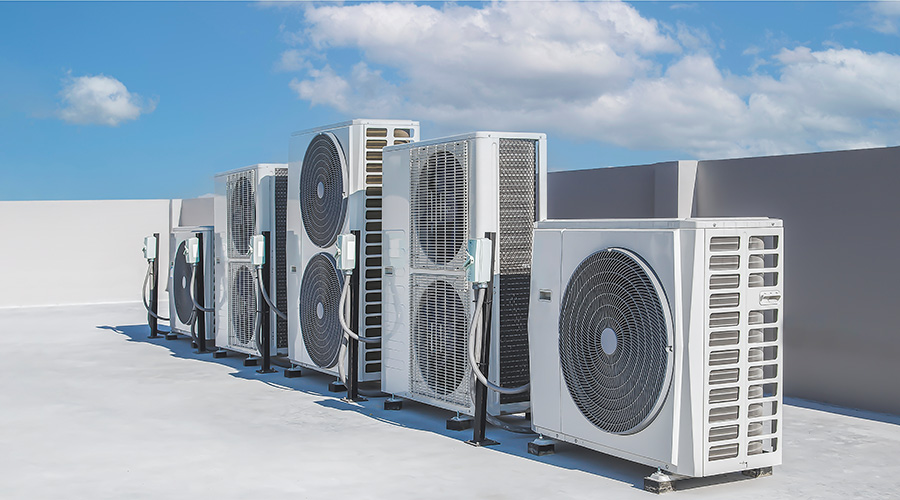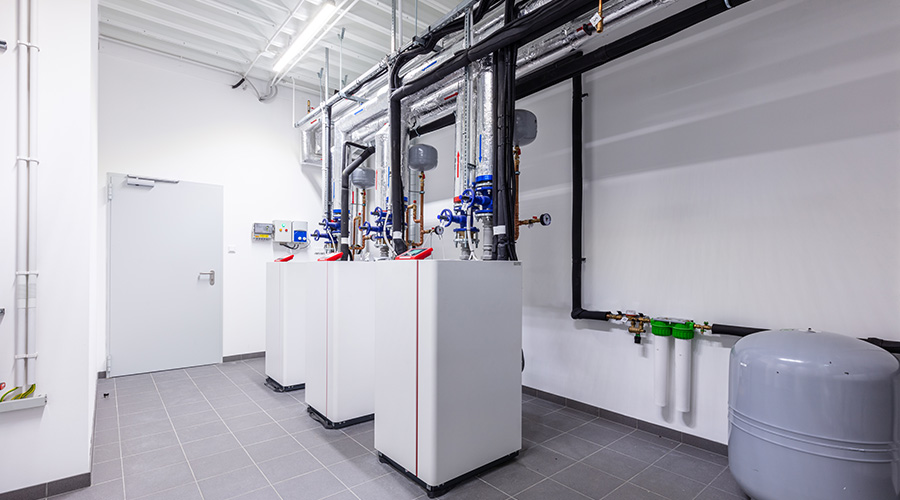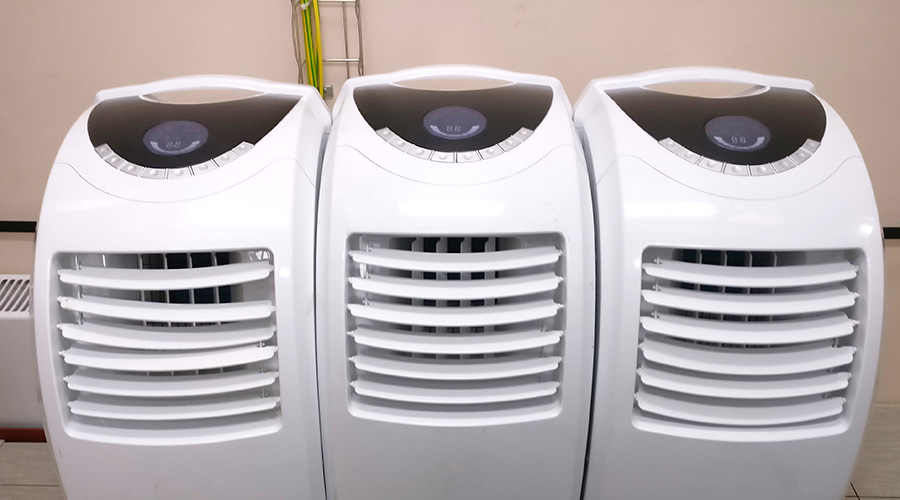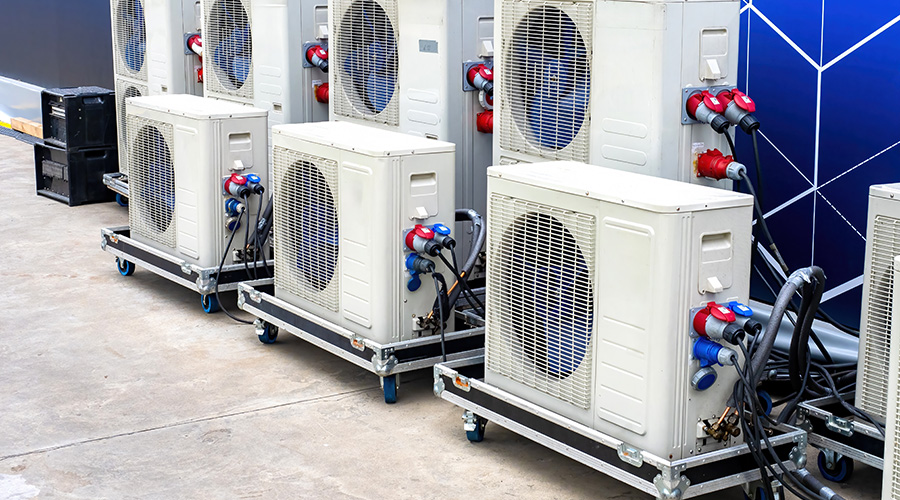Decide Between Evaporative, Direct Expansion Coolers, Research Energy Efficiency Before Buying Or Renting Portable Cooling
Portable cooling systems can be divided roughly into two types, says Philip Winterland, project manager with Facility Engineering Associates. Facility managers will need to decide between evaporative or direct expansion cooling when selecting a system.
Evaporative — sometimes referred to as swamp — coolers work by saturating a filter with water, then using a fan to draw air through the filter, thus cooling the air.
However, this process also raises the relative humidity in the area being cooled. In addition, leaks in the equipment can occur. As a result, evaporative systems generally are best used in areas with lower humidity.
Direct expansion (DX) coolers are more commonly used, Winterland says. DX coolers tend to cool quickly. On the flip side, these can be noisy, as well as expensive to operate, Winterland points out. That's largely because they use compressor motors that run continuously.
5. What is the EER (energy efficiency rating)?
The EER tells the ratio of cooling capacity to energy input, calculated as the British thermal units [Btu] per hour output to the power being input, measured in watts. The higher the number, the more efficient the equipment.
While portable coolers can play an important role in effectively cooling a facility, it can be misleading to assume that their use will automatically cut overall energy costs, Winterland says. "Portable cooling typically relies on less efficient technology than what you would find in a traditional system and generally operates on lower voltage (120 volts versus 208 or 240 volt systems)." That means the compressor has to work harder — which translates to greater energy consumption.
Moreover, portable systems typically have to reject the heat they're removing from the area being cooled to a plenum or exterior space, Winterland says. That often means using flexible ducting that isn't well insulated and allows some heat back into the building. While noting that the exact results can vary from one facility and cooling unit to another, "as a general rule, portable cooling devices are not as efficient as their fixed place counterparts," Winterland adds.
What about turning to a portable cooler when just a specific area requires cooling, rather than using an installed unit that will cool an entire building? Even here, Winterland sounds a note of caution. Many newer systems can be set to cool different parts of a facility differently, which could eliminate the need for a portable cooler, he points out. Of course, this might not be an option in an older building.
6. Buy or rent?
Typically, this question is fairly straightforward to address, Westerkamp says. In most cases, a facility manager will have some idea of the approximate length of time he or she will need a portable cooling unit. If, for instance, a unit is needed just until power is restored to a building, a short-term lease typically makes the most sense. Winterland identifies several pros and cons of each transaction type. Rental units often can be obtained without making a large upfront investment. In addition, repairs and maintenance costs may be included in the rental charge. It's typically easier to obtain a rental unit from a nearby distributor on fairly short notice, while a purchased unit may need to be shipped from a distant manufacturer.
On the other hand, the range of models may be more limited in a rental transaction, Winterland says. Of course, it likely will make sense to purchase a unit if additional cooling power is needed for an extended period of time.
Related Topics:













